First, let me introduce myself; I am a mechanical design engineer and amateur photographer living in Potsdam, Germany. I’m 32 years old and have grown up around cameras, as both my parents are enthusiastic photographers. I never stopped shooting film, and only got a digital camera 6 years ago.
Whilst doing my masters in Manchester, I saw an ad from Kamerastore for an engineer to draw spare parts for them. This was my first step into the professional side of photography, albeit as an engineer, not a photographer. Through Kamerastore, I got in contact with Arild, and we started Valoi together.At Valoi I was responsible for the technical design work, concept creation as well as a large portion of sourcing the parts and communication with the suppliers. After my masters I moved to Germany to become head of engineering at Adox. At Adox I was working as chief of engineering, responsible for coordinating the team, organising maintenance schedules, designing new machinery, like the coating machine, as well as restoring the old machines back to life. Time showed that doing both Adox and Valoi, as well as having a normal life, was not possible, so I left Valoi in good spirits. After some time, however, the entrepreneurial bug got me again, and I started thinking about a new project. I guess it’s no surprise to you that it was all about analogue photography again.
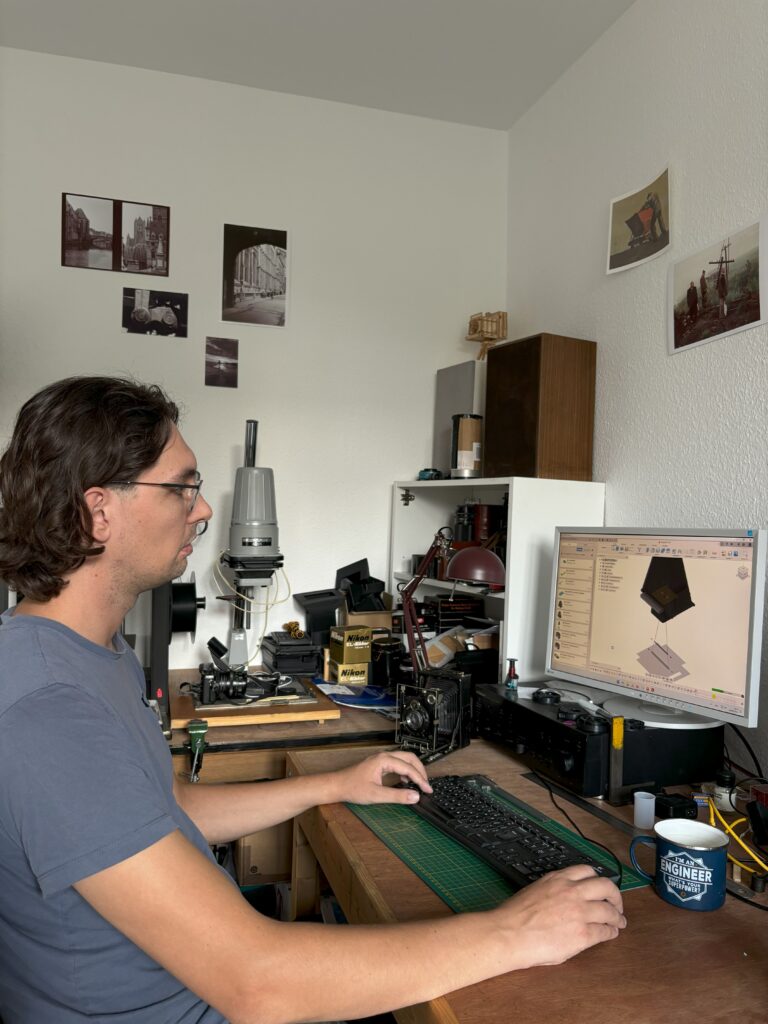
From my childhood, I remember that we were printing every roll on 10×15 cm, and the 13×18 format was reserved for the best shots. My father often told me about the magic of being in a darkroom and creating the prints on your own. It’s an artistic extension of the whole photographing process and strongly inspired both my and my father’s approach to analogue photography and exposure.
Even though we had all the gear in the house, we never had the space, time or dedication to set up the darkroom, so this remained an elusive dream for me. Later, when dev + print 10×15 became a lot more expensive and scanners and Instagram made their way into my life, the physical aspect of photography became more and more restricted to the act of developing my BNW films. And I always found something was lacking in that. Why shoot film if the result is digital?
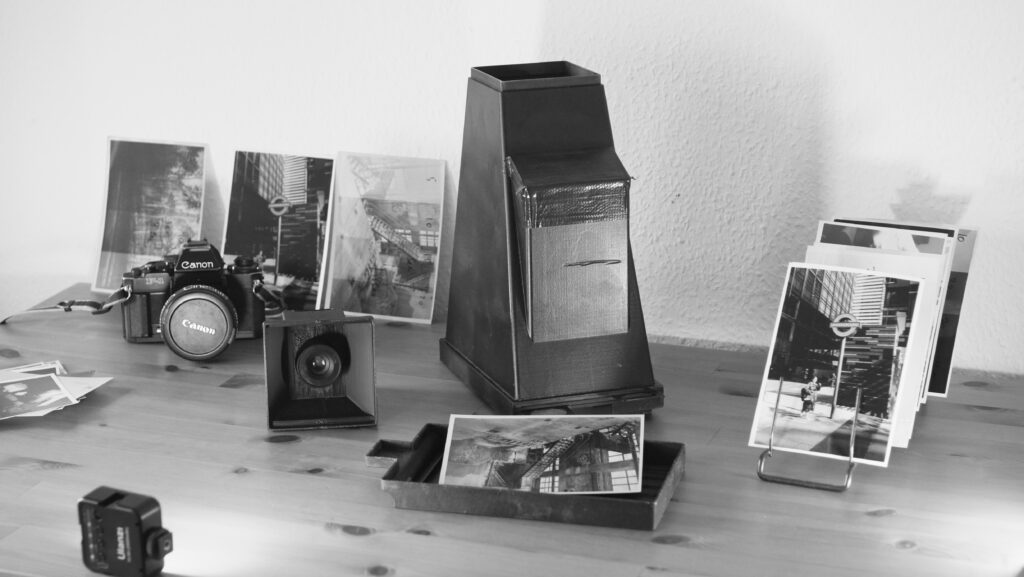
So, while talking with my colleagues and friends and pondering ideas for starting a business, the idea of an enlarger that does not need a darkroom was born. The design process seemed straightforward enough but turned out to be more complicated than expected, as expected.
The aim was to create a device that can:
- Print and develop without the need for a darkroom
- Print different formats of film and paper
- And is affordable enough to take your first steps in printing
The initial idea phase had many additional thoughts: Can I introduce printing of all roll film formats, 135 through 120? Can I print paper sizes from 10×15 to 20×25? Unfortunately, this had to be shrunk to a starter version that can only print 135 film on 10×15 and 13×18 paper.
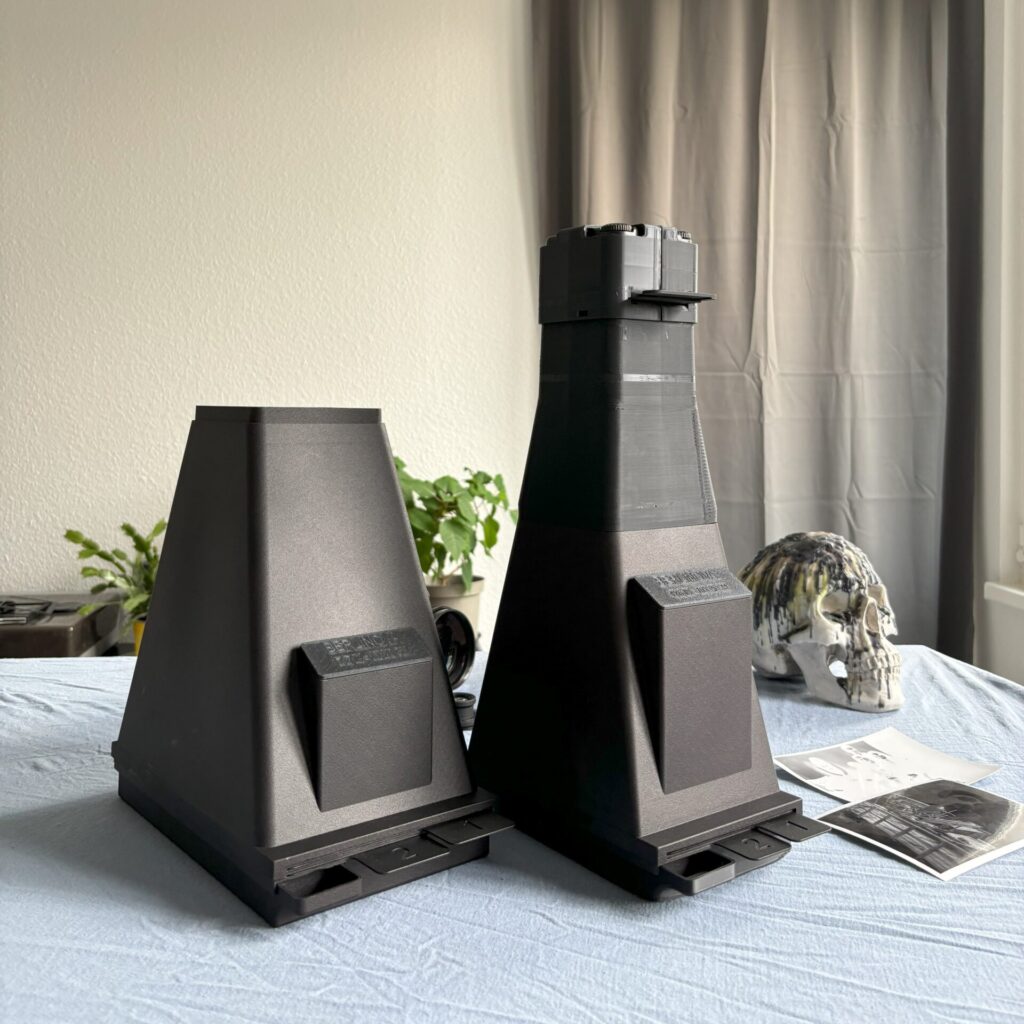
The next problem was moving parts; if you introduce moving parts, you increase complexity, part count and chances for user error while raising the price. So, I opted for a design with a fixed focus. This mandated the use of a standardised lens, so the search was on for a lens that met both the quality and price criteria of the project. Unfortunately, I found nothing in the market that met the requirements, so I searched for a partner in optical design and manufacturing to create a bespoke lens. I found a fantastic company in the UK that has created a great lens for the project, which is undoubtedly an asset to the company as it opens up so many other possibilities.
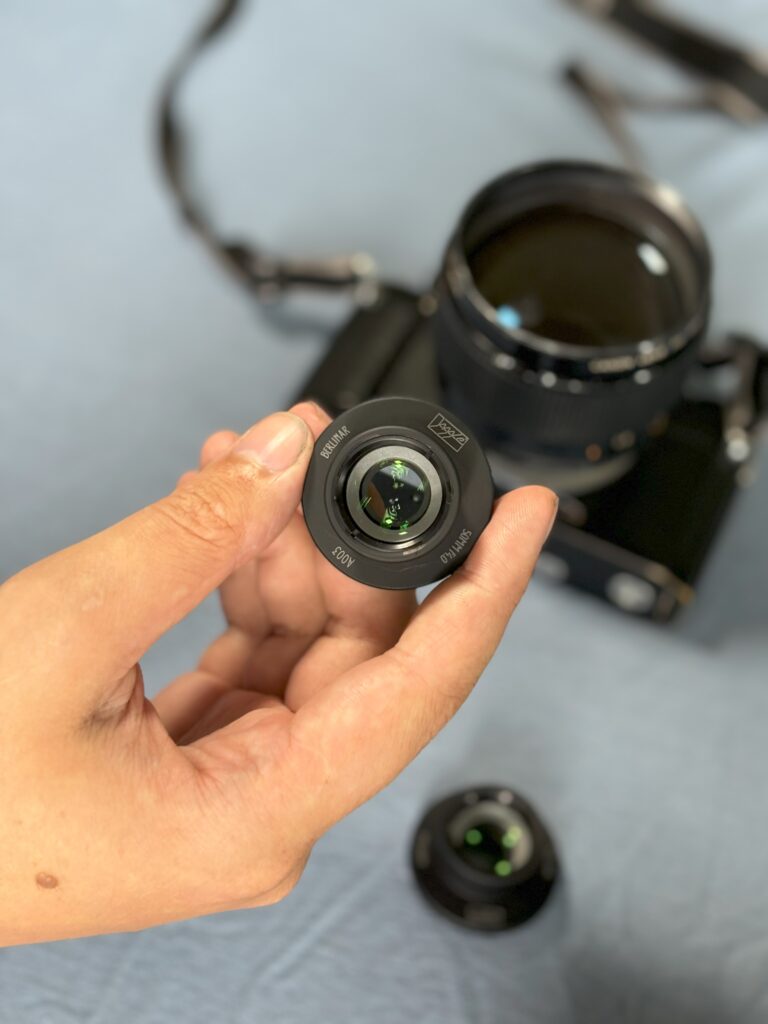
The last aspect of the enlarger was the ability to develop the paper in daylight. Initially, there were, of course, exciting and crazy ideas; can we put a 10-pack of paper in the enlarger and develop the sheets 1 by 1? Is it possible to make it daylight loading? But also the unuseful, integrating the paper compartment into the enlarger as a fixed part. In the end, I designed it as an interchangeable cassette + tray which moves the paper from the “exposure compartment” to the “development compartment” in the tray by means of pulling out a second darkslide. This concept was received very well by a group of peers, with the immediate question: does it work in a large format camera? So now the cassettes are compatible with the Graflok system of double film cassettes, and the cassette without tray fits behind the spring-loaded ground glass of a standard large format camera.
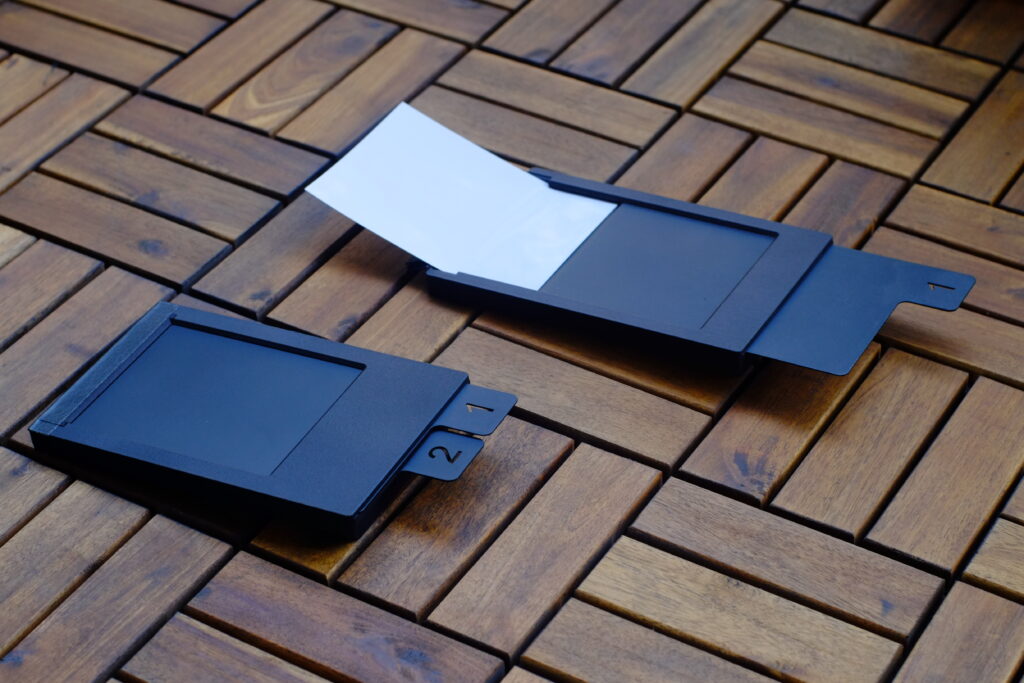
I am really humbled by all the excitement and positive feedback I’ve received on this project. I am looking forward to seeing it out there and witnessing what everyone gets up to! We are planning
a Kickstarter to start on the 16th of October and are looking forward to all of your support!
Find the project everywhere:
Our website
On Tiktok
On Instagram
On Facebook
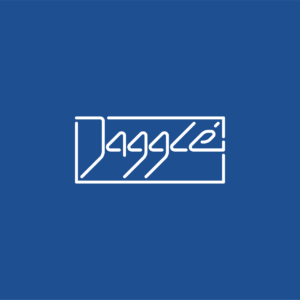
Share this post:
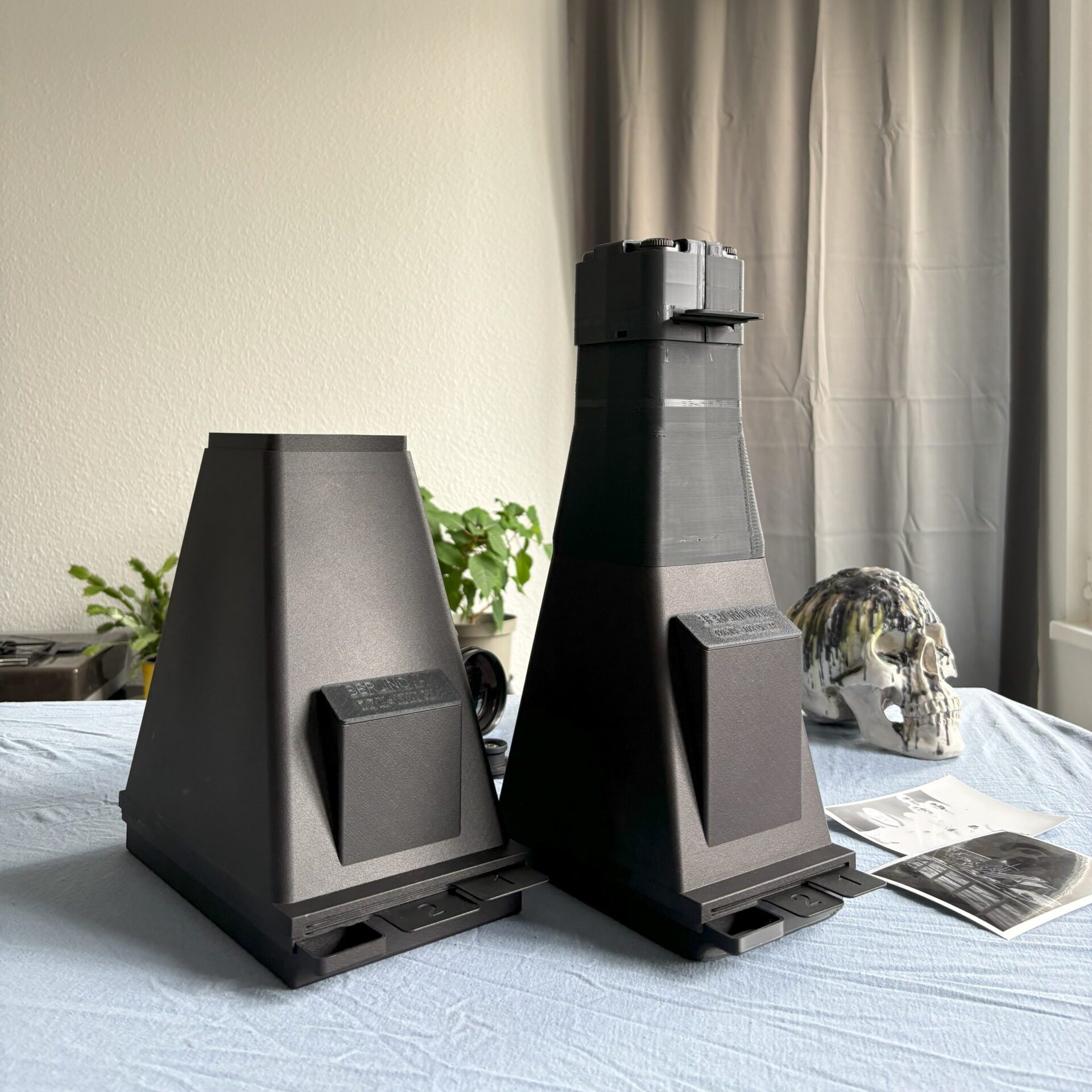
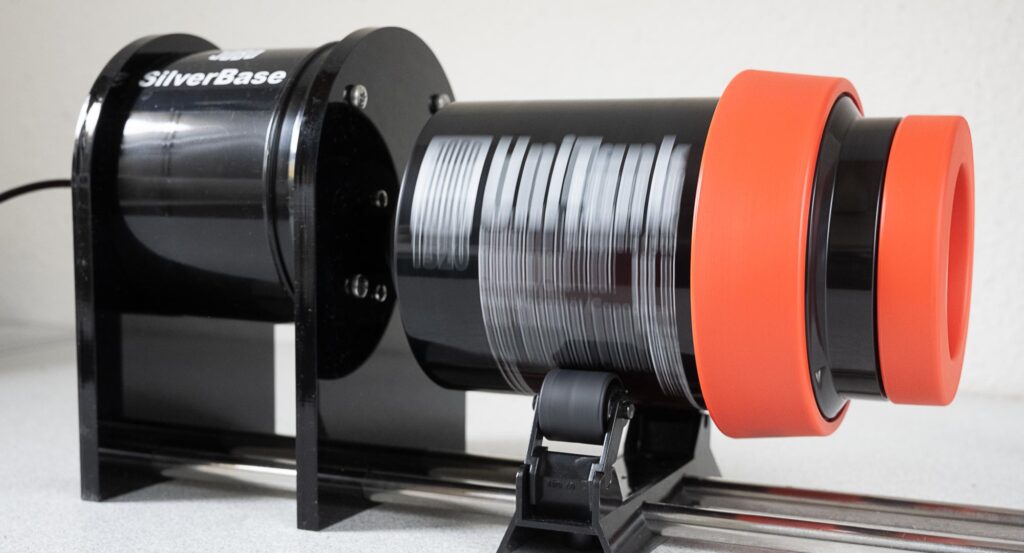
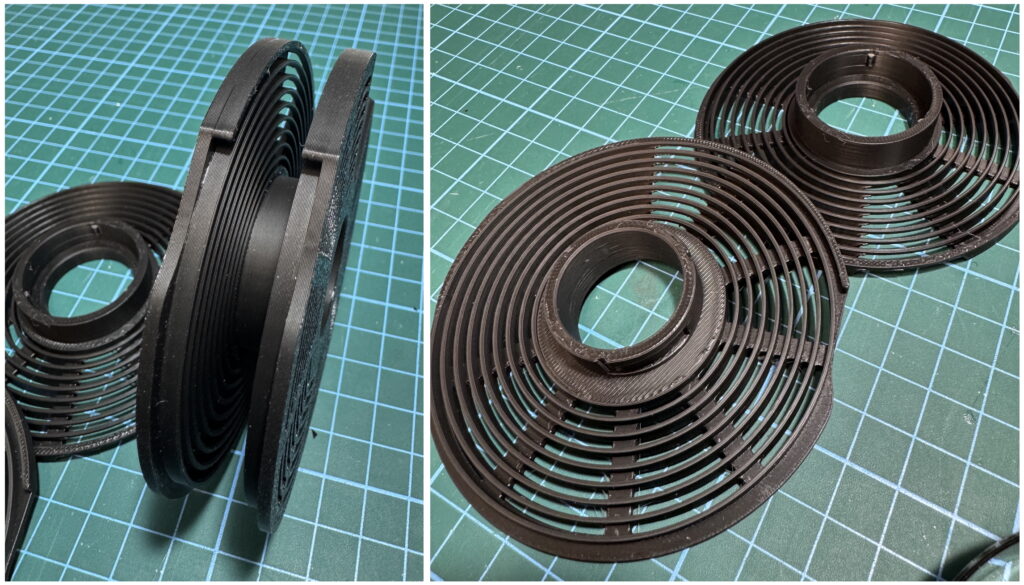
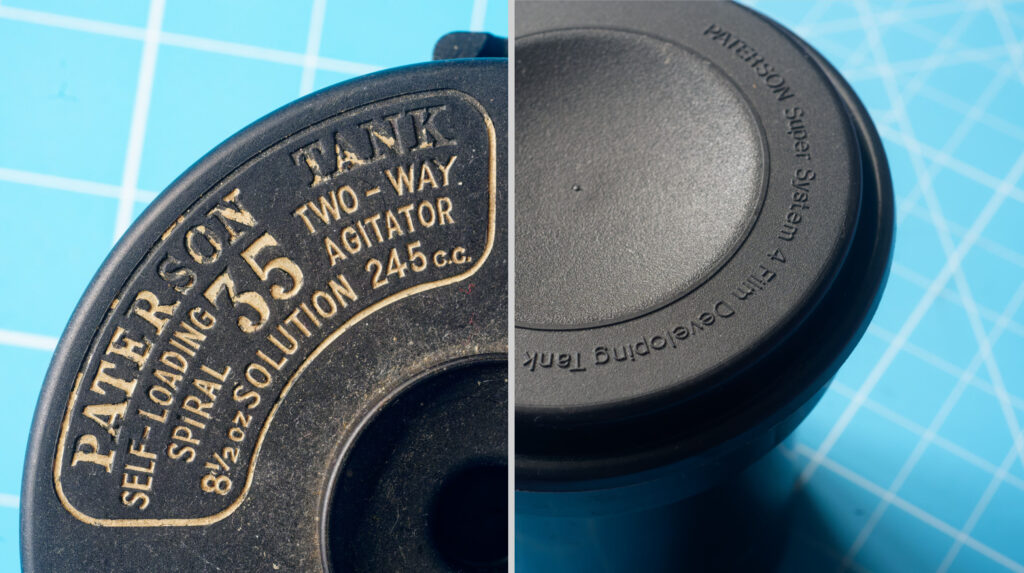
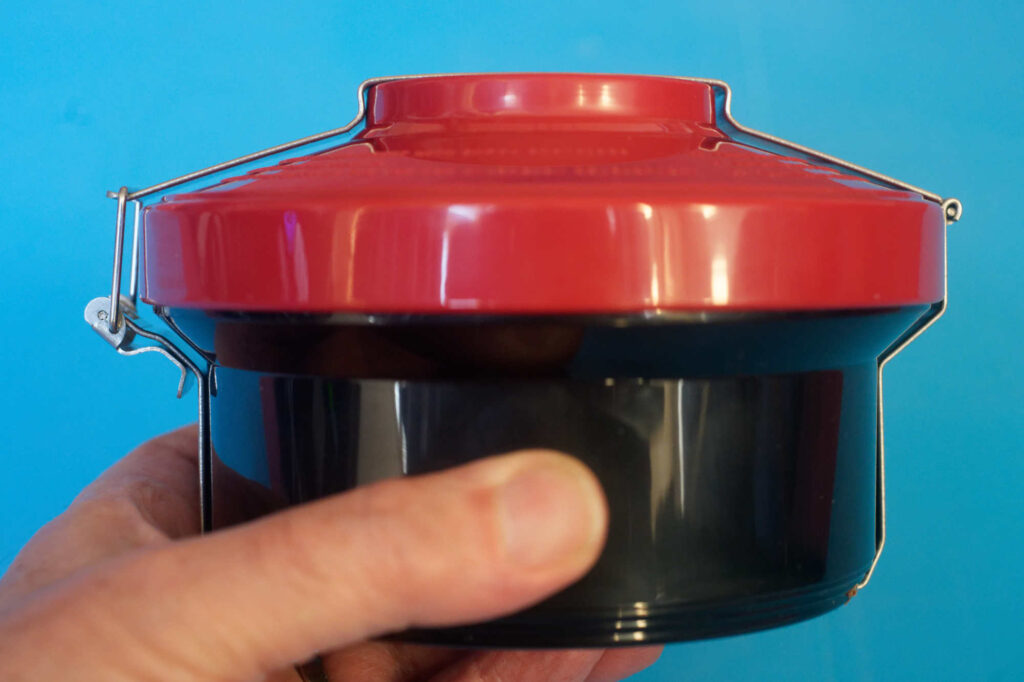




Comments
Zheng Li on Jagglé – Introducing my Daylight Enlarger
Comment posted: 16/09/2024
1) Can you develop prints in total daylight like developing film in daylight tanks? Like pouring in developer, then stop bath, and finally fixer? Typical darkroom needs 3-4 large trays, each dedicated to one of the chemicals, and red safety light. I just don't have that kind of space.
2) How many prints can you develop in one go? One sheet, 10 sheets, or somewhere in between?
In addition, I believe your Graflok compatible print cassette will be very attractive for lots of us doing large format photography. Not only we can try paper negatives now, but also we can use 10 sheets of paper negative in one compact holder!
Comment posted: 16/09/2024
Jeffery Luhn on Jagglé – Introducing my Daylight Enlarger
Comment posted: 16/09/2024
Thanks for this article. It's an interesting concept! Are there any videos that show you using it?
Comment posted: 16/09/2024
Gary Smith on Jagglé – Introducing my Daylight Enlarger
Comment posted: 16/09/2024
Thanks for sharing!
Comment posted: 16/09/2024
Tony Warren on Jagglé – Introducing my Daylight Enlarger
Comment posted: 16/09/2024
Once again, congratulations on an excellent product and on your contributions to Adox, one of my hero companies for helping support the resurgence of film.
Comment posted: 16/09/2024
Comment posted: 16/09/2024
Geoff Chaplin on Jagglé – Introducing my Daylight Enlarger
Comment posted: 17/09/2024
Comment posted: 17/09/2024
Nigel Gardner on Jagglé – Introducing my Daylight Enlarger
Comment posted: 17/09/2024
Comment posted: 17/09/2024
David Hill on Jagglé – Introducing my Daylight Enlarger
Comment posted: 18/09/2024
amigo toro on Jagglé – Introducing my Daylight Enlarger
Comment posted: 08/11/2024
Andrew Chen on Jagglé – Introducing my Daylight Enlarger
Comment posted: 09/11/2025
I am writing not only because I admire the work, but also because I have been working on a similar path myself. Earlier I just completed my master’s thesis at Politecnico di Milano, where I designed a daylight enlarger as my final project. My background is in product design rather than engineering, so my own solution focused more on experience, usability, and form. Seeing your project made me realize how differently—and how effectively—the same problem can be approached from a strong engineering perspective.
Although I only discovered your work recently, it immediately made me wish I had found it earlier. I believe our projects share similar intentions, and I would very much appreciate the opportunity to exchange thoughts with you. I would be glad to share my thesis project, the development journey, and the challenges I faced, if you are interested.
Beyond the academic aspect, I also want to mention that analogue photography has become a personal passion and a long-term ambition of mine. Like you, I hope to eventually contribute to this field in a more substantial way—possibly through a startup or a series of designed tools for the community. Your project reminded me that this direction is not only meaningful but also feasible when pursued with dedication.
If you are open to it, I would be grateful for any opportunity to connect, whether to discuss our respective approaches, exchange feedback, or simply share experiences as people working toward similar goals.
Thank you very much for your time. I truly appreciate the work you have done, and I hope we can be in touch.